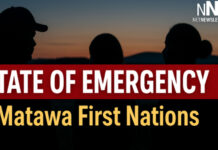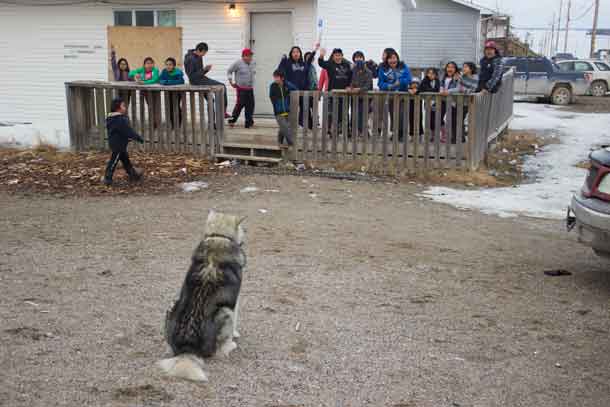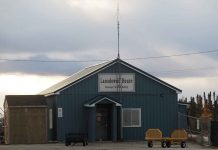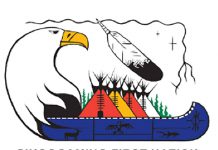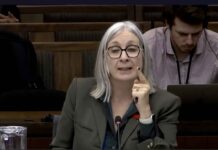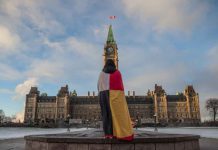In the last few weeks, Indigenous communities have been facing an alarming rise in the number of new and active COVID-19 cases.
In the last month alone, ISC was made aware of over 200 new cases in First Nations communities. In the same timeframe, the number of active cases went from 23 to 129 cases. Last week, 68 new cases were reported. This surpasses the previous absolute high of 57 new cases reported during the week of April 19-25. This recent increase in cases has been linked to private gatherings, as well as exposure to positive cases from outside of communities.
Since the beginning of the pandemic, everyone has come together, made sacrifices, and done their part to help limit the spread of the virus. After many months of staying home, some may be experiencing pandemic fatigue. This can result in less vigilance when it comes to important practices, like limiting non-essential trips or maintaining physical distancing from those outside our social bubble. While these changes are hard, we must continue to be careful and listen to the advice of our public health experts. We cannot stop until we are all safe. We must remain vigilant. The threat of this virus is not yet behind us.
First Nations, Inuit and Métis communities were successful in preventing, responding and stopping the spread of COVID-19 during the first wave of the pandemic. We know these times are challenging, but we must redouble our efforts and continue to follow the measures that saved many lives.
We recommend everyone familiarize themselves with the recommended public health guidelines outlined by their province or territory of residence, and/or by their community Leadership. We also encourage everyone to share the advice of public health experts, such as from the Public Health Agency of Canada, so that their friends and families are also well informed.
ISC will continue working with Indigenous leadership to flatten the COVID–19 curve in First Nation, Inuit and Métis communities as leaders are working to ensure their members have access to the most up-to-date public health information and services.
It is important to underscore that COVID–19 can take up to 14 days after exposure to the virus for symptoms to appear. During this time, the virus can easily spread to others. This means that decisions made today affect families, friends and communities for weeks to come.
Because of these growing numbers, preventative measures that help stop the spread are of upmost importance.
First, we must limit our physical contact with others. A good rule of thumb is to limit your social circle to your household members and any essential supports, like childcare help. Every person that we come into contact with increases the chances of transmission. All efforts to reduce encounters with others make a difference. Remember to not to let your guard down when in public, even if you see someone you know.
Additionally, it’s critical that we consistently wear a mask or face covering properly when in public or around those at risk, especially when it is hard to maintain a physical distance. Without knowing, anyone can spread COVID-19 by coughing or sneezing, talking, hugging, or even singing. When you wear a mask that covers your mouth and nose, you’re helping to protect yourself and those around you.
As the weather gets colder, we are going to begin facing colds and the seasonal flu. It can be difficult to distinguish between the symptoms of a cold, influenza, and COVID-19. However, the preventative measures we take to prevent the spread of COVID-19 are also effective at limiting the spread of influenza. Moreover, the annual flu vaccine is the most effective way to prevent the flu and flu-related complications.
The trend in new cases of COVID-19 we are seeing in Indigenous communities is similar to the one we are seeing in the general population; we urge everyone to help change the trend by making wise decisions, and following recommended public health measures.
As of October 1 Indigenous Services Canada (ISC) is aware of these confirmed cases of COVID-19 for First Nations communities:
- 689 confirmed positive cases of COVID-19
- 58 hospitalizations
- 111 active cases
- 566 recovered cases
- 12 deaths
There are a total of 21 confirmed positive cases in Nunavik, Quebec, and all but 3 have recovered.
As a reminder, the final eligibility period for the Canada Emergency Response Benefit (CERB) ended on Saturday, September 26, 2020. If you and your family require financial support during these difficult times, you may be eligible to apply to the Government of Canada’s new Canada Recovery Benefit from Canada Revenue Agency or access financial support through the Employment Insurance Benefit from Service Canada. If you are not eligible for these Benefits, contact your band administrators to discuss other possible financial support programs available to you, such as the On-Reserve Income Assistance program.
Quick facts
- Over $2.2 billion has been committed in specific support to Indigenous and northern communities and organizations.
- $285.1 million to support the ongoing public health response to COVID-19 in Indigenous communities.
- $685 million for the distinctions-based Indigenous Community Support Fund.
- $10 million for emergency family violence prevention shelters on reserve and in Yukon to support women and children fleeing violence.
- $72.6 million for health and social services support to the governments of Yukon, Northwest Territories, and Nunavut.
- $34.3 million for territorial businesses, through CanNor’s Regional Relief and Recovery Fund.
- $25 million for enhancement to the Nutrition North Canada Subsidy.
- $17.3 million in support for Northern Air Carriers.
- $15 million for CanNor’s Northern Business Relief Fund.
- Up to $306.8 million in interest-free loans to help small and medium-sized Indigenous businesses.
- $75.2 million in 2020-21 in distinctions-based support for First Nations, Inuit, and Métis Nation students pursuing post-secondary education.
- $270 million to supplement the On-Reserve Income Assistance Program to address increased demand on the program, which will help individuals and families meet their essential living expenses.
- $44.8 million over five years to build 12 new shelters, which will help protect and support Indigenous women and girls experiencing and fleeing violence. The Government of Canada will also provide $40.8 million to support operational costs for these new shelters over the first five years, and $10.2 million annually ongoing. Starting this year, $1 million a year ongoing will also be provided to support engagement with Métis leaders and service providers on shelter provision and community-led violence prevention projects for Métis women, girls, LGBTQ and two-spirited people.
- $117 million to support community-owned and micro-businesses through the Indigenous Community Business Fund
- $16 million to support Indigenous tourism businesses through the COVID-19 Indigenous Tourism Stimulus Development Fund
- $82.5 million in mental health and wellness supports to help Indigenous communities adapt and expand mental wellness services, improving access and addressing growing demand, in the context of the COVID-19 pandemic.
- $112 million to support a safe return to elementary and secondary schools for First Nations on reserves.
- While provinces and territories have jurisdiction for education off-reserve, ISC supports First Nations control of First Nations education. ISC provides funding directly to First Nations and designated First Nations organizations to support elementary and secondary education for on-reserve students.
Associated links
- Coronavirus (COVID-19) and Indigenous communities
- Coronavirus disease (COVID-19): Prevention and risks
- COVID-19 guidance for schools Kindergarten to Grade 12
- Risk mitigation tool for gatherings and events operating during the COVID-19 pandemic
- The seasonal flu and the flu shot: protect yourself, protect your community
- ISC: $2.2 billion in federal support for Indigenous Communities


